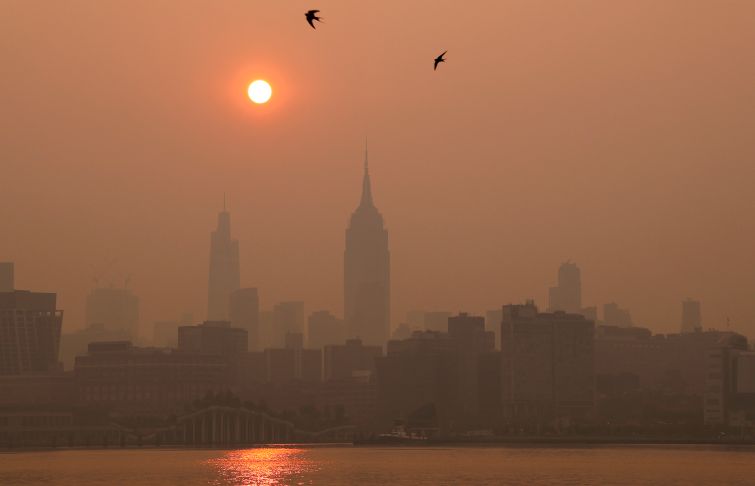NYC’s Zoning Must Be Updated to Combat Carbon From Affordable Housing
Many affordable buildings are decades or almost a century old, which means they were designed well before climate change accelerated
By Jolie Milstein June 21, 2023 9:00 am
reprints
As New Yorkers struggled through apocalyptic smoke from Canadian forest fires two weeks ago, we were reminded of the urgency of measures to mitigate climate change. Not only were the fires almost certainly a result of climate change, but their impact also underscored the importance of our decarbonization efforts.
Importantly, it was also a reminder that in terms of carbon emissions, no geography or industry can put its head in the sand — let alone ours. Right now, nearly 70 percent of carbon emissions in New York City are generated by existing buildings. For the affordable housing industry, this challenge is nothing new: In partnership with the government, we have long been leaders in the effort to move toward all-electric buildings. However, outdated zoning is throttling our efforts to retrofit our housing stock, with ridiculous restrictions on exterior insulation, elevated solar panels, and rooftop HVAC equipment.
Many affordable buildings are decades or almost a century old, which means they were designed, built and operated in a much different world — one in which climate change at this scale was not fathomable to most people.
In other words, if New York is going to really address climate change, the real estate industry is going to lead the way by redesigning, refurbishing and re-equipping old buildings with new technology even as we build new sustainable buildings in ground-up construction.
Importantly, this work is already being done. The affordable housing community is a shining example of what is possible when architects, developers, property owners and government officials come together to solve this challenge.
At the state level, New York State Homes and Community Renewal requires strong sustainability measures for affordable housing. These standards are stringent, and most of the new affordable housing built over the last several years in New York is built to nationally recognized climate standards, with many impressive retrofits underway. It is more of the same at the city level, where the New York City Department of Housing Preservation and Development’s design guidelines require equally stringent sustainable practices for all rehabilitation projects.
Lawmakers in Albany have also taken action, passing a ban on natural gas and fossil fuel hookups in all new construction — bringing the general market closer to affordable housing standards in a move that was widely supported by our industry.

This is a great first step. But far too many New York City properties have their hands tied by outdated zoning restrictions that minimize the impact of the above measures. It is time for that to change.
The city’s “City of Yes for Carbon Neutrality” zoning text amendment would update current zoning rules to allow for more sustainable development and building retrofits, unleashing the innovation and financing of the private market on buildings that desperately need it.
For example, the amendments would allow solar panels to cover 100 percent of a roof area — a zoning change the New York State Association for Affordable Housing proposed 14 months ago. This could potentially increase solar energy generation by 290 percent. It also permits the use of exterior insulating panels to help prevent energy waste, which is currently restricted by an outdated definition of “floor area” in zoning text.
Furthermore, the City of Yes for Carbon Neutrality allows developers to place HVAC equipment, like heat pumps, on roofs and in yards. Heat pumps are an essential tool to help lower emissions in our air and reduce electricity use for heating by 50 percent — and can curb asthma rates, too. It’s unconscionable that out-of-date zoning laws are restricting real estate developers from installing sustainability measures.
To actively fight against climate change, New York must alter the way we consume energy using every tool in our toolbox. This includes direct investment, zoning changes, and electrification efforts to permit high-quality rehabilitation efforts.
The City Council can start by passing these proposed zoning changes (and not watering them down along the way). That would be a common-sense way to make smoke-filled skies a distant — and unusual — memory.
Jolie Milstein is the president and CEO of the New York State Association for Affordable Housing.


